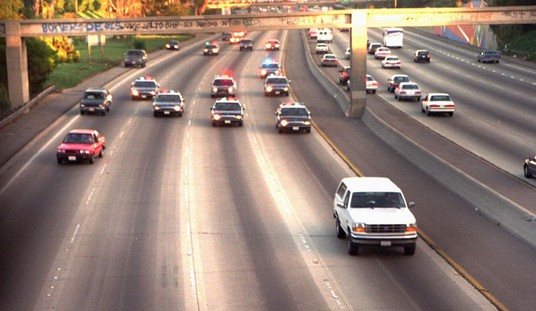The Democrats’ extensive losses in the 2010 and 2014 midterms (as well as other off-year elections in 2009, 2011, 2015 and the Governors races in 2012) have left their party hollowed out beneath the White House, which is one reason why the top two contenders in their presidential primary are a 68-year-old who arrived in Washington in 1993, and a 74-year-old who has never held a leadership position in Congress. But beyond the sheer numbers of losses in the Senate, House, Governorships, and state legislatures, there is also the fact that the GOP is building a strong, deep farm team while the Democrats are aging and not replacing their leaders with much in the way of new blood.
The Senate and the Governors
Let’s start with the cream of the crop: the statewide elected Senators and Governors who provide the bulk of all Presidential candidates (of the 23 Presidential candidates this year, 19 had been Senators and/or Governors; the only Presidents since FDR who had not been were Eisenhower and Ford). Republicans have a decisive 85-65 advantage in these offices, and what’s more, their Senators and Governors are much more heavily weighted towards the 40-64 age bracket, while the Democrats’ center of gravity is more in the 55-74 age bracket – in fact, while the average Republican is about two years younger, the median is almost four years younger, since the GOP average is skewed a bit by having six Senators between the age of 79-82 (Grassley, Hatch, Shelby, Inhofe, McCain, and Roberts). Those old bulls may be fading slowly, but they are very much the exception, not the rule, in the GOP caucus. And some of these statewide officials will be around awhile – Bobby Jindal, who is leaving office in January and just bowed out of the presidential race, is only 44, the same age Ronald Reagan was in 1955. Here’s the full breakdown, counting the nation’s three “independents,” all elected as de facto Democrats, with their parties:

Here’s a quick graph of the age distribution, courtesy of Moe Lane:

The Democratic wipeouts in several recent midterms, after GOP wipeouts in 2006 and 2008, are partly responsible for this. But there’s also a generational aspect: anyone born between 1960 and 1976 would belong to “Generation Reagan,” people who cast their first presidential ballot between 1980 and 1996, when conservative ideas were at their greatest ascendancy and even Democrats like Bill Clinton had to pay tribute to them in word and deed to win elections. 26 of the GOP’s Senators and Governors hail from this generation, including [mc_name name=’Sen. Marco Rubio (R-FL)’ chamber=’senate’ mcid=’R000595′ ], [mc_name name=’Sen. Ted Cruz (R-TX)’ chamber=’senate’ mcid=’C001098′ ], Jindal, Scott Walker, [mc_name name=’Sen. Rand Paul (R-KY)’ chamber=’senate’ mcid=’P000603′ ], Chris Christie, [mc_name name=’Sen. Mike Lee (R-UT)’ chamber=’senate’ mcid=’L000577′ ], Nikki Haley, [mc_name name=’Sen. Tim Scott (R-SC)’ chamber=’senate’ mcid=’S001184′ ], Pat Toomey, [mc_name name=’Sen. Ben Sasse (R-NE)’ chamber=’senate’ mcid=’S001197′ ], [mc_name name=’Sen. Cory Gardner (R-CO)’ chamber=’senate’ mcid=’G000562′ ], and [mc_name name=’Sen. Joni Ernst (R-IA)’ chamber=’senate’ mcid=’E000295′ ] (so do [mc_name name=’Rep. Paul Ryan (R-WI)’ chamber=’house’ mcid=’R000570′ ] and Sarah Palin). [mc_name name=’Sen. Tom Cotton (R-AR)’ chamber=’senate’ mcid=’C001095′ ], born in 1977, is the only Senator or Governor of either party born after 1976. Kentucky Governor-Elect Matt Bevin, age 48, will add to this cohort.
Barack Obama, who famously grew up and came of age outside the mainstream of America (ranging from his youth in Indonesia to his immersion with Pakistanis in college), hails from the older edge of this generation (he was born in 1961), but the Democrats have only 14 Senators or Governors born in this age group, and half of those were born between 1960-64 at the tail end of the Baby Boom: [mc_name name=’Sen. Bob Casey (D-PA)’ chamber=’senate’ mcid=’C001070′ ], Jr. (son of a Democratic Governor), [mc_name name=’Sen. Amy Klobuchar (D-MN)’ chamber=’senate’ mcid=’K000367′ ], Kate Brown, Jack Markell, [mc_name name=’Sen. Tammy Baldwin (D-WI)’ chamber=’senate’ mcid=’B001230′ ], Chris Coons, and [mc_name name=’Sen. Michael Bennet (D-CO)’ chamber=’senate’ mcid=’B001267′ ]. That leaves a narrow bench of candidates from the heart of Generation Reagan: Steve Bullock, [mc_name name=’Sen. Kirsten Gillibrand (D-NY)’ chamber=’senate’ mcid=’G000555′ ], [mc_name name=’Sen. Cory Booker (D-NJ)’ chamber=’senate’ mcid=’B001288′ ], Gina Raimondo, [mc_name name=’Sen. Martin Heinrich (D-NM)’ chamber=’senate’ mcid=’H001046′ ], [mc_name name=’Sen. Brian Schatz (D-HI)’ chamber=’senate’ mcid=’S001194′ ], and Chris Murphy. Few of those are especially impressive political talents. John Bel Edwards, age 49, could enter those ranks if he wins the Louisiana Governor’s race on Saturday (departing Kentucky Governor Steve Beshear is 71). Martin O’Malley, who will be 54 next year, is running for President now for little other reason than that he sees a party headed by Hillary and Bernie Sanders as presenting few obstacles to advancement even for a man who wants America to look like Baltimore.
And even the Democrats’ successes of the past few years haven’t added a lot of young blood. Of the 31 new Democratic Governors or Senators added since Election Day 2010, 9 are over 65, 16 are over 60, and just 6 are under 50. California elected a new Governor in 2010 – Jerry Brown, now 77, who was first elected to statewide office in 1974 and ran his third presidential campaign in 1992. [mc_name name=’Sen. Angus King (I-ME)’ chamber=’senate’ mcid=’K000383′ ], a new Democratic Senator in 2012, is 71 and was previously a Governor. [mc_name name=’Sen. Richard Blumenthal (D-CT)’ chamber=’senate’ mcid=’B001277′ ], another new Senator in 2012, is 69 and had already been in statewide office a quarter century. Massachusetts added two new Democratic Senators since 2012 – [mc_name name=’Sen. Elizabeth Warren (D-MA)’ chamber=’senate’ mcid=’W000817′ ] is 66, Ed Markey is 69 and had been in the House since 1976. Joe Manchin is 68 and had already been a sitting Governor; Tom Wolf, the new Pennsylvania Governor, is 66. New Hawaii Senator Maizie Hirono is 68.
Then there’s the House, where the GOP has a massive 247-188 majority:

This is the farm team for future Senators and in some cases Governors, and the picture for Democrats is even bleaker – almost a 5 year spread in average age, 6 years in median age. At the youngest end, each party has 11 Representatives born after 1976, indicating the eventual arrival of the Democrats’ Millennial cavalry (the second-youngest of whom is [mc_name name=’Rep. Tulsi Gabbard (D-HI)’ chamber=’house’ mcid=’G000571′ ] of Hawaii, who has already been feuding with DNC leadership). But in the “Generation Reagan” years, the GOP has 110 Representatives; the Democrats have 51. There are two House Republicans in their 80s compared to four Democrats (including Charlie Rangel and John Conyers, symptoms of the tendency of majority African-American districts to keep electing the same grizzled veterans forever). There are 13 House Republicans in their 70s, compared to 32 Democrats, and many more of the Democrats are in the latter half of that age bracket (14-2). Fully 39% of House Democrats are 65 or older, compared to 16.5% of Republicans.
American politics and its moods and demographic and ideological currents are cyclical. But leaders still matter; personnel is policy. President Obama built his national majorities on the unique personal appeal he offered to segments of the electorate that previously hadn’t turned out to vote much – and the Democrats, having nurtured precious few non-white statewide officeholders over the years, lucked out in getting him into the Senate when his primary and general election opponents in 2004 self-destructed due to dirt in their divorce records. Yet his presidency has bled his party, as scores of officeholders have lost their jobs over their association with his agenda and rhetoric that is aimed at a geographically narrow band of urban voters and rural minority voters.
The cupboard right now is pretty close to bare of another generation of talented leaders (bare enough that a former ceremonial Mayor of San Antonio is widely assumed to be their most likely candidate for Vice President), while Republicans’ is stuffed to bursting. This is why 2016 is so urgent for Democrats – not only will they have trouble mustering up a good presidential ticket in 2020 if they’re not running Hillary as an incumbent, but the turnout effects of the top of the two tickets are likely to have down-ticket coattails, just as they did in 2004, 2008 and 2012, and if the Democrats face yet another cycle of electing fewer new faces with a future than Republicans, they may find their future as a party facing a self-reinforcing cycle of underachieving.














Join the conversation as a VIP Member